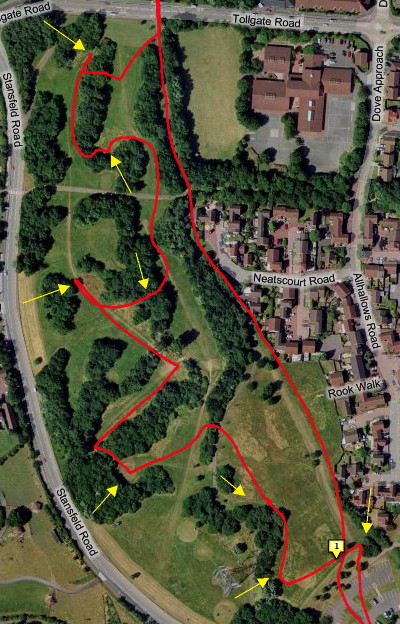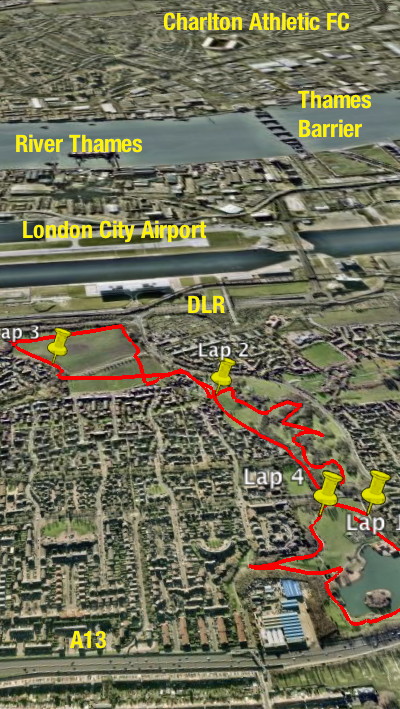 BUPA Great Capital Run – run by the same organisation that does the Great North Run, this new race was 10K around Hyde Park. Just one lap, although the course doubled back for quite a lot of its length, with (generally slower) runners coming the other way.
BUPA Great Capital Run – run by the same organisation that does the Great North Run, this new race was 10K around Hyde Park. Just one lap, although the course doubled back for quite a lot of its length, with (generally slower) runners coming the other way.
I have nothing but praise for this event. Seeded start waves meant I was across the start line in 5 seconds, and apart from the very first corner, there was never anyone immediately in front of me slowing me down. The course was well laid out, there were drinks points at 5.5km and 7.5km, and a run-through shower at 6.5km. These were much appreciated as it was warm (20C), and the course had several long sections which weren’t shaded. There were no queues for baggage, nice goody bags with food and drink, and a good finish commentary. I didn’t spot any celebraties, although Myleene Klass started us off.
 I was aiming for 40 minutes, and planned to do 4 minute Ks. The start was fast, as I expected, as I was running with people who were about my speed. After then, I eased back only slightly, and went through 5km at 20:05 – just five seconds down on my target. However I didn’t do a negative split here – I tired a lot between 6km and 7km – even the slight change of pace at the water stop took a few seconds out of me.
I was aiming for 40 minutes, and planned to do 4 minute Ks. The start was fast, as I expected, as I was running with people who were about my speed. After then, I eased back only slightly, and went through 5km at 20:05 – just five seconds down on my target. However I didn’t do a negative split here – I tired a lot between 6km and 7km – even the slight change of pace at the water stop took a few seconds out of me.
I finished in 40:36, according to my stopwatch and the chip timing – just outside my 40 minute target, but a personal best by 83 seconds. I finished in 91st place out of around 6600 runners. Winning time was 29:22. I think (from memory) my 1K splits were: 3:50, 4:00, 4:10, 4:00, 4:05, 4:10, 4:20, 4:10, 4:10, 4:00. The finish was tough, there were 800m, 400m and 200m countdown markers, but the last 400m were on a (very) slight hill, and the last 200m really felt a lot further than 200m! So, overall, very pleased.








 BUPA Great Capital Run – run by the same organisation that does the Great North Run, this new race was 10K around Hyde Park. Just one lap, although the course doubled back for quite a lot of its length, with (generally slower) runners coming the other way.
BUPA Great Capital Run – run by the same organisation that does the Great North Run, this new race was 10K around Hyde Park. Just one lap, although the course doubled back for quite a lot of its length, with (generally slower) runners coming the other way. I was aiming for 40 minutes, and planned to do 4 minute Ks. The start was fast, as I expected, as I was running with people who were about my speed. After then, I eased back only slightly, and went through 5km at 20:05 – just five seconds down on my target. However I didn’t do a negative split here – I tired a lot between 6km and 7km – even the slight change of pace at the water stop took a few seconds out of me.
I was aiming for 40 minutes, and planned to do 4 minute Ks. The start was fast, as I expected, as I was running with people who were about my speed. After then, I eased back only slightly, and went through 5km at 20:05 – just five seconds down on my target. However I didn’t do a negative split here – I tired a lot between 6km and 7km – even the slight change of pace at the water stop took a few seconds out of me.